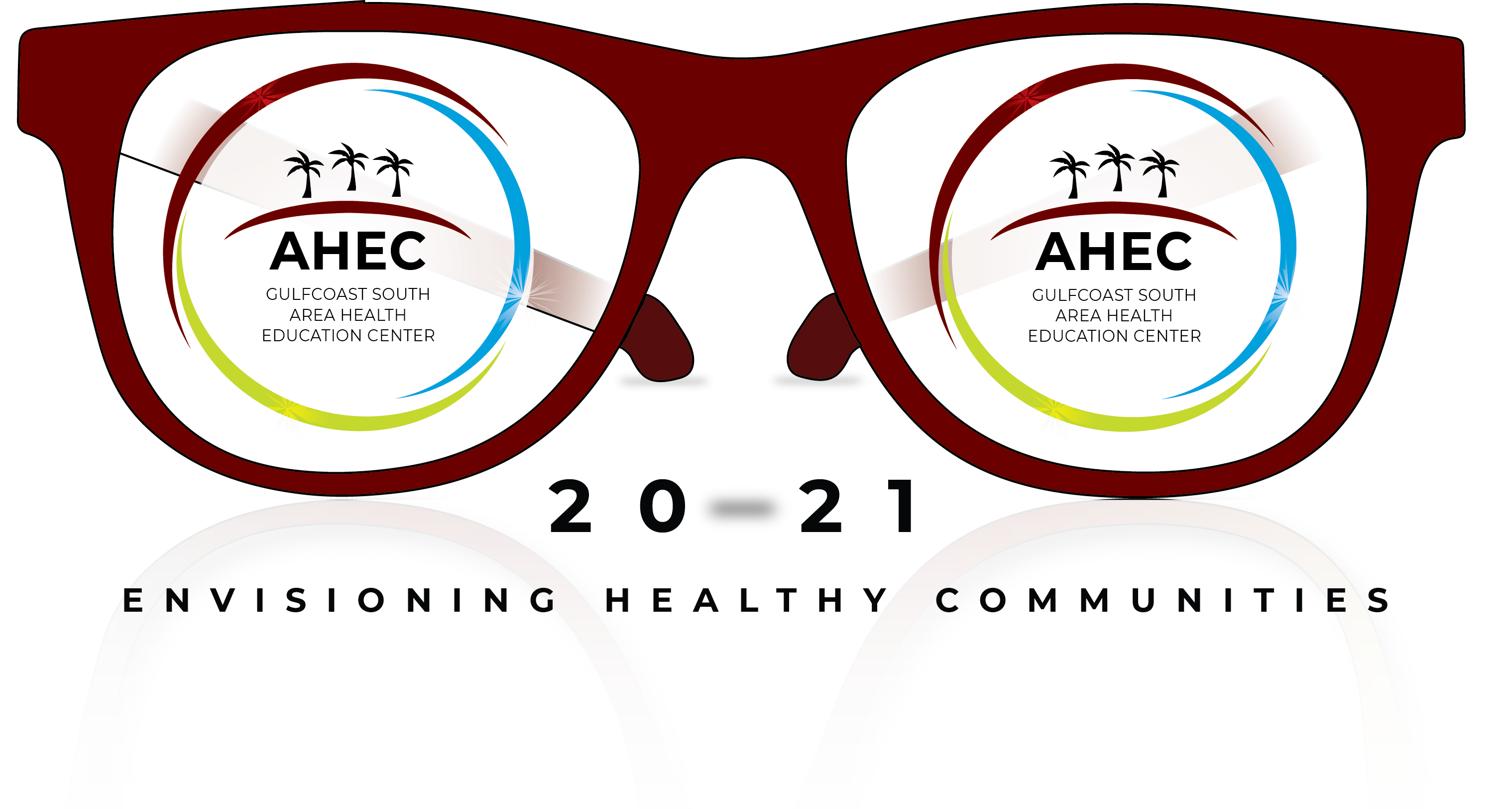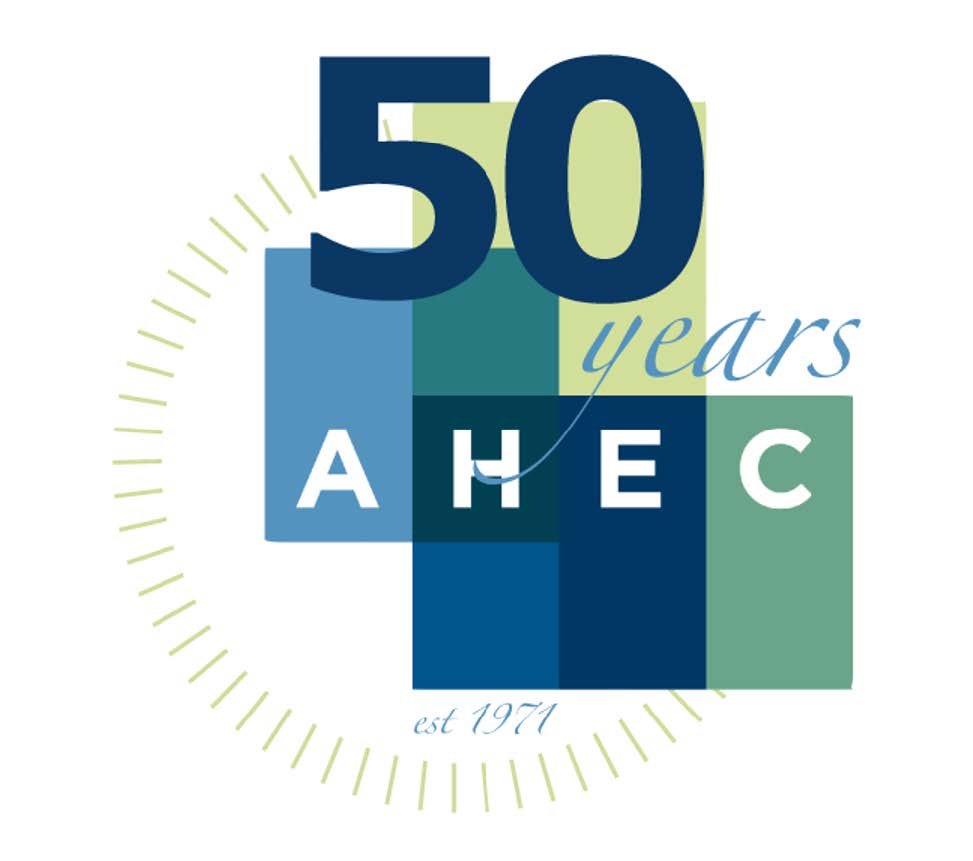In 1971, the nationwide AHEC system was developed by Congress to recruit, train and retain a health professions workforce committed to underserved populations. By their very structure, AHECs are able to respond in a flexible and creative manner in adapting national initiatives to help address local and regional healthcare issues and support the nation’s most vulnerable communities. The national AHEC network consists of more than 300 AHEC Program offices and Centers, serving over 85% of the counties in the United States, with close to 50 years of experience.
In partnership with healthcare systems, schools, community-based organizations and more, AHECs employ traditional and innovative approaches to develop and train a diverse healthcare workforce prepared to deliver culturally appropriate, high-quality, team-based care, with an emphasis on primary care for rural and underserved communities. AHECs are embedded in the communities they serve, positioning them to respond rapidly to emergent training needs of healthcare providers and health professions students.
Gulfcoast South AHEC is affiliated with the University of South Florida AHEC Program, part of the Florida AHEC Network, as well as an active member of the National AHEC Organization. The Florida AHEC Network is an extensive statewide system made up of five AHEC Programs and ten Centers. Each Center is supported by an AHEC Program at one of the state’s medical schools. This organizational structure enables the AHECs to draw upon the resources of the academic health centers in addressing local healthcare issues. The Florida AHEC Network was originally established to recruit youth into health careers, support health professions students training and coordinate health professional education. Beginning in 2007, the Florida AHEC Network has facilitated tobacco training and cessation programs as well as a variety of health access, education and workforce development initiatives.
Since 1995, Gulfcoast South AHEC has fostered programs that educate and enhance the well-being of the communities we serve. The rich history of providing education to health professionals and students, training and supporting community health workers, and inspiring and preparing youth to enter any one of the healthcare professions that our communities desperately need, is a source of pride and inspiration for future endeavors. Addressing the health disparities of rural and underserved communities, and providing access to health education and services to Limited English Proficient patients and those who care for them are examples of expanded investments we have made in response to critical needs. Through education, we will strive to fulfill our vision where every person has access to quality care.
GSAHEC’s 25th Anniversary Highlights

On June 8, 1995, Gulfcoast South AHEC’s articles of incorporation were filed, formally establishing our organization in Charlotte, DeSoto, Manatee and Sarasota Counties. Gulfcoast South AHEC held a culminating celebration on June 8, 2021, to celebrate its first 25 years of service.
Current and former board members and staff, tobacco cessation facilitators, program participants and students, USF AHEC, local vendors, and community partners were recognized and celebrated for contributing to GSAHEC’s success.
GSAHEC’s team worked hard to celebrate our 25 years of service, and although this was our culminating event, we know the years to come will allow us to connect more students to careers, more professionals to communities, and continue our work of helping to improve access to quality care for all members of our communities.
Gulfcoast South AHEC is an organization to whom you can turn to provide education, support and inspiration for healthier communities. Our tagline, Promoting Community Health through Partnerships & Education, speaks to the importance of partnerships in the work we do. We plan to fortify our partnerships and good work for many years to come. Thanks for being a part of our journey!
Select the buttons below to view the recap of our momentous event!
GSAHEC’s 25th Anniversary Vision

Over the past 25 years, Gulfcoast South AHEC has fostered programs that educate and enhance the well-being of the communities we serve. The rich history of providing education to health professionals and students, training and supporting community health workers, and inspiring and preparing youth to enter any one of the healthcare professions that our communities desperately need, is a source of pride and inspiration for future endeavors. Addressing the health disparities of rural and underserved communities, and providing access to health education and services to Limited English Proficient patients and those who care for them are examples of expanded investments we have made in response to critical needs. Through education, we will strive to fulfill our vision where every person has access to quality care.

In celebration of the 50th Anniversary of the passing of legislation which created the Area Health Education Center (AHEC) Program, the National AHEC Organization (NAO) presents the History of AHEC: Celebrating our Past, Present, and Future. This video was made possible through sponsorships from the Alaska AHEC, Florida AHEC Network and the NAO. Featuring past, present and future NAO leadership, the video outlines the history of the AHEC Program and highlights the impact of AHECs in our nation’s healthcare workforce development initiatives.
National Area Health Education Centers’ accomplishments are substantial. Between Academic Year 2014- 2019, AHEC trained over 1.8 million individuals and recorded over 1.7 million program completers. Forty-two percent of AHEC’s program completers were from a rural background, 40 percent were from disadvantaged backgrounds, and 29 percent were underrepresented minorities. Each of the five years, 62 percent or more of AHEC’s experiential training sites were in medically underserved communities, 60 percent or more were in primary care settings, and 40 percent or more were in rural areas.
Dwain Harris, National AHEC Organization CEO said it best: “You know you are part of a strong program when you’ve been around for 50 years, and your accumulated number of completers in a five-year period run into the millions.”

